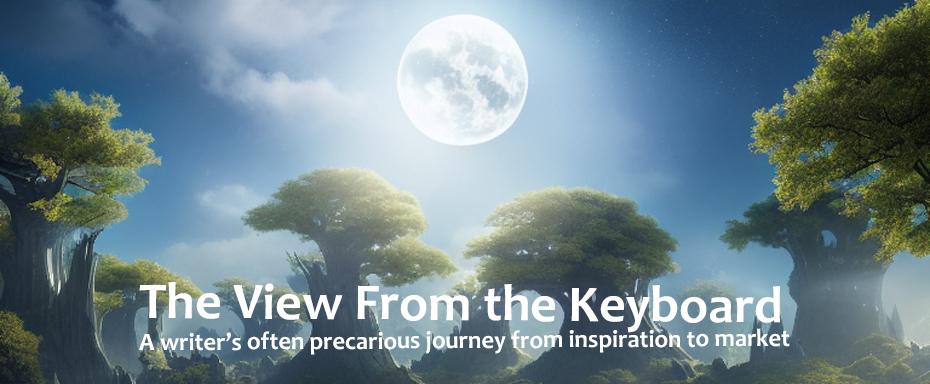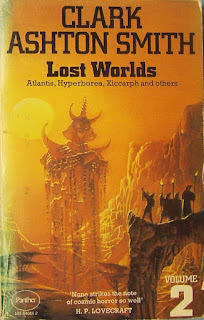This
post was first uploaded on Tuesday 6th December, 2016. Archived
posts have been recovered following irretrievable login problems.
The immediacy of art makes an impact, and before the age of wall-to-wall visual entertainment paintings were the form of inspirational stimulus. Science fiction book covers were (and still are) an artform all their own, and it is interesting to look back on the talents who influenced one’s own development. I could cite many – and will discuss them in future posts – but this time I’d like to talk about Bruce Pennington.
Many of the covers featured here are photographed directly from my own copies – some have been in my collection forty-plus years!
Bruce Pennington (72, a native of Somerset) may be less well known on the US side of the pond than the UK, but he was an artist who defined and was signatory to the science fiction of my childhood and teenage years. He was a principle contract artist to New English Library, supplying an amazing number of their covers in the 1970s, including some which have become icons of the field – such as his series of covers for Frank Herbert’s Dune novels, most especially Dune Messiah, a painting which gives me shivers to this day.
Stylistically, Pennington’s work is graceful, no matter how horrifying or bizarre his subject matter, and it is colourful – the breadth of his pallet knows no bounds, and his near-primary-coloured alien skies, grading tonally through subtly blended brushwork are a trademark. Classical training and knowledge drip from his compositions (he attended Ravensbourne School of Art), and his figure work often embodies the gestural or mannerist style of the Renaissance, lending the dignity and credibility of tradition to imagery which is, as all science fiction art must be, both surreal and avant garde. A further signature element of Pennington’s work is the geological or mineralogical formations he creates, landscapes filled with shapes the eye has trouble picking as either natural or sculptural. While a distinct stylistic device, I feel there is at least a conceptual complimentarity to the bizarre mineralogical formations which featured strongly in the work of the late, great Johannes Franciscus Vandenberg (“Jhofra”).
It’s worth noting Pennington seems never to have worked in airbrush: he was once described as perhaps the only artist of the period who never succumbed to the “imitation Foss craze” (or was allowed to by his publishers – Peter Jones’s first published cover was a Foss homage Jones described as “a flaky yellow spaceship” whose design was extracted from the lines of the F-4 Phantom II, and was commissioned to be exactly what it was. Art directors knew what was selling.)
I was first exposed to Pennington’s work through NEL’s 1974-1976 magazine Science Fiction Monthly, whose gimmick was an unstapled tabloid format with pull-out, large size, double-sided full colour posters. Enjoy the accompanying gallery of SFM covers! Among the work of Foss, Hardy and other giants of the day, Pennington was heavily featured, and as a young teen I would study his work with wide-eyed delight. I tried some of his imagery – rippled deserts and strange figures – in watercolour on cartridge paper, not that I could wrap my head around it at the time, but all life is a learning process.
Perhaps something of the colour, vivacity and avowed strangeness of imagery embodied in his work coalesced in my own thinking, as to this day when I visualise an alien world to be described in a story’s background narrative, it is often a Penningtonian scene that flashes to mind. It may be a Foss-eqsue or Elson-esque vessel in the sky above, but the planet itself will glow with warmth in my mind’s eye, and I will struggle to succinctly evoke such an image without belabouring the exposition, while envying the richness of prose the late, great Jack Vance would have brought to the same task.
Pennington’s canon of work across decades has become part of the science fiction heritage. It is expressly commercial, but maintains the tradition of fine art down the centuries and is as visually evocative now as forty years ago. If you have never seen anything of his work, give yourself a treat, follow the links here and be prepared to be submerged in a universe of colour and form whose creativity and innate skill are so very different to the crystal exactitude of the computer-mediated imagery of today – but that’s a whole other post!
His Facebook fan page
Cheers, Mike Adamson


















No comments:
Post a Comment